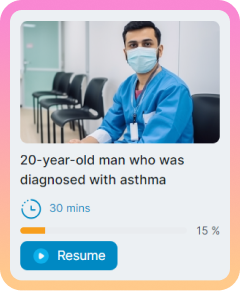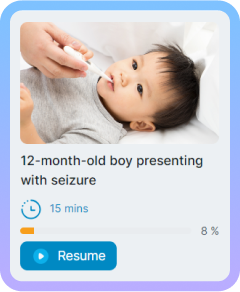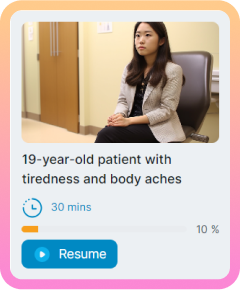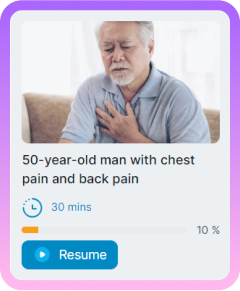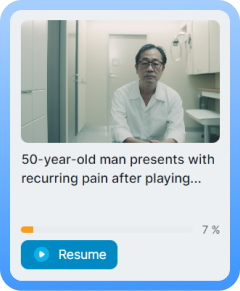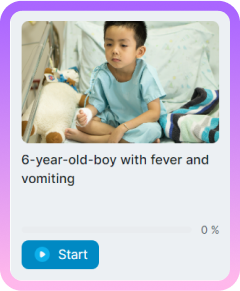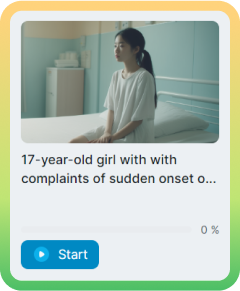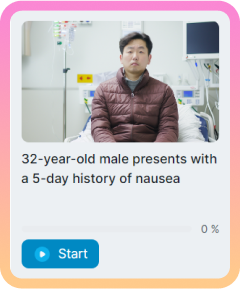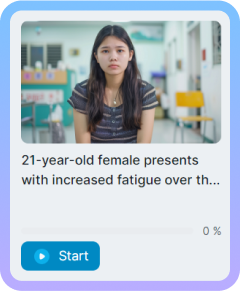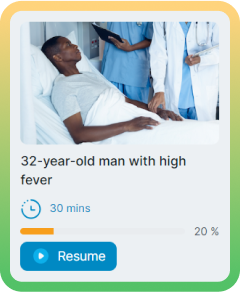
What is “UCR” ?
In the UCR framework, “clinical reasoning is defined in a universal, simple and practical manner for all healthcare trainees, professionals and leaders. This method aims to accelerate the acquisition of competence, and increase the extent of achieved competence.”

Dr. Soh Jian Yi
Adjunct Associate Professor of Pediatrics at NUS Yoo
Long Ling School of Medicine
Author of Universal Clinical Reasoning: Optimising the Approach and Care for Patients
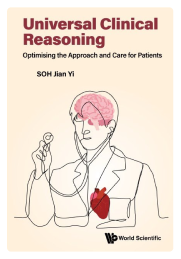



1. The presenting complaint

2. Generate early differentials

3. Target the clinical evaluation

4. Apply knowledge of medical sciences

5. Are diagnostic tests needed?

6. Are tests needed to adjust treatment?

7. Decide and implement other decisions for management

8. Follow-up
Who is UCR for?
Medical students at any level will learn to:




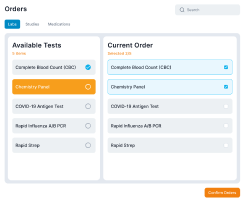
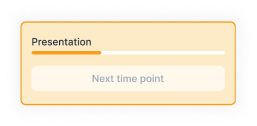
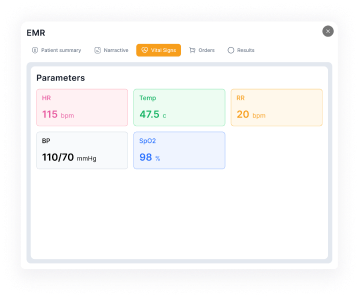
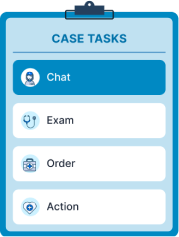


Med2Lab’s Virtual Coach technology allows for assessment and feedback on universal reasoning principles applicable to ALL patients. These principles help learners who are seeing different diseases, with varied presentations in different healthcare settings, understand the variations instead of being overwhelmed by them. This is a powerful advantage no other platform is known to provide.
Dr. Soh Jian Yi
National University of Singapore
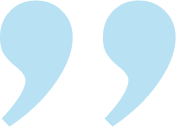

There is no existing platform that uses clinical reasoning to bridge medical science theory and clinical practice. Med2Lab’s tool is able to do this intuitively and at scale through a sound thought process and generative AI. It can also be readily contextualised to meet the varying needs in different markets that focus on specific learners, disciplines or disease conditions, without altering the clinical reasoning algorithm being imparted.
Dr. Chen Zhi Xiong
National University of Singapore



How UCR Benefits
Learners and Educators

Detailed Feedback on Reasoning
Learners receive personalized feedback across six domains of clinical reasoning, aiding in reinforcing strengths, pinpointing weaknesses, and enabling effective correction.

Access Learners’ Progress
Our AI platform assists educators in evaluating and comprehending learners' responses and underlying reasoning, thereby enabling targeted remediation of weaknesses to enhance short-term and long-term impact.

Gamification
Motivate students to enjoy interactive learning with game-like elements such as XP, streak counter, certificates, and real-time leaderboards.
How Does AI Bring UCR to Life?

Interactive History Taking:
Experience realistic AI-patient interactions, get instant feedback for thorough history taking and risk factor identification.

Guided Case Approach
AI-guided cases prompt critical questions that link exam findings with symptoms and history for accuracy.
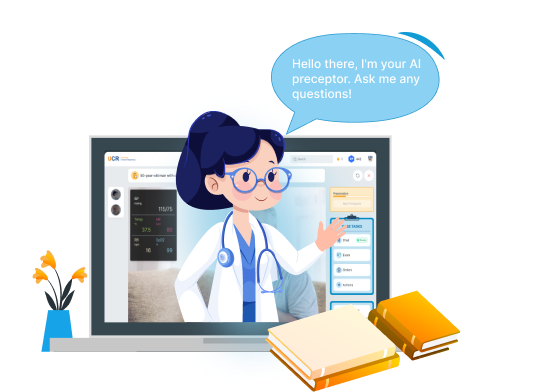

Differential Diagnosis
Master rapid formation of initial diagnoses utilizing patient history, risk factors, and clinical data with AI-coach guidance.

Realistic Patients:
Experience the complete patient journey where follow-up interactions are dependent on the user’s diagnoses and treatment strategies.



